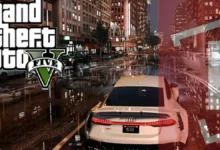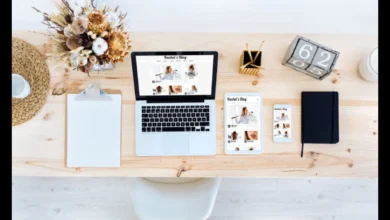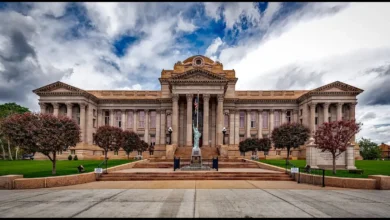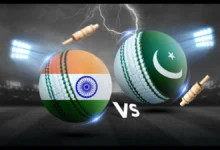Reviving the Retro: Exploring the Iconic 80s Fonts.
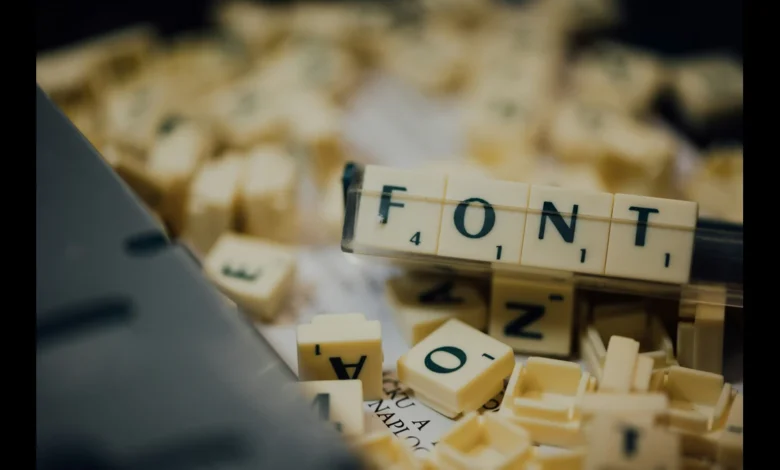

Introduction to 80s Fonts
In this blog post, we’ll explore the characteristics of popular 80s fonts, discuss their impact on pop culture, and even give you some creative ideas on incorporating them into your designs. Step into a time machine and prepare to be transported back to the vibrant era of neon colors, big hair, and synthesizer music. That’s right, we’re diving headfirst into the iconic world of 80s fonts! These bold and eye-catching typefaces are synonymous with an era of pushing boundaries and embracing individuality. So dust off your shoulder pads and prepare for a trip down memory lane as we revive the retro and discover the magic of 80s typography!
Popular 80s Fonts and Their Characteristics
Popular 80s Fonts and Their Characteristics
The 80s was a decade known for its bold and vibrant design choices, and the typography of that era was no exception. As we delve into popular 80s fonts, you’ll discover their distinct characteristics that continue to captivate designers today.
One iconic font from the 80s is the Brush Script. This cursive typeface exudes a sense of playfulness with its flowing strokes and uneven edges. It brings an element of spontaneity to any design project, perfect for evoking a nostalgic vibe.
Another notable font is Bauhaus, inspired by the German art school movement of the early 20th century. Its clean lines and geometric shapes epitomize minimalism while maintaining an air of sophistication. Bauhaus fonts are often used in fashion or technology-related designs to convey modernity.
Let’s remember Neon fonts! These eye-catching letters were often seen adorning arcade games or movie posters during this era. The glowing effect of neon colors adds an electrifying touch to any graphic design piece.
Additionally, we must recognize Memphix fonts – characterized by their playful mix of bright colors, abstract shapes, and asymmetric layouts reminiscent of the Memphis Design Movement. This unique style remains highly influential even in contemporary designs.
Vaporwave fonts gained popularity more recently but draw inspiration from retro aesthetics prevalent in the 80s. They feature warped letterforms combined with pastel hues or glitch effects – resulting in a dreamy yet futuristic appearance that appeals to today’s nostalgia seekers.
These are just a few examples showcasing the diversity within popular 80s fonts, each possessing its charm and visual impact. Whether you’re aiming for a vintage look or adding some flair to your modern design projects—exploring these iconic typefaces can bring back memories while making your work stand out.
Creative Ways to Use 80s Fonts in Design
Creative Ways to Use 80s Fonts in Design
The 80s were all about boldness and self-expression, and the fonts of that era perfectly capture that spirit. To infuse your designs with a touch of nostalgia, here are some creative ways to incorporate 80s fonts:
1. Retro Posters: Bring back the neon lights and geometric patterns by using vibrant 80s fonts on posters. Whether you’re promoting an event or simply adding flair to a space, these fonts will grab attention.
2. Logo Designs: Give your brand identity an instant throwback by incorporating retro-inspired typography into your logo design. It’s a surefire way to make your brand stand out.
3. Website Headers: Make a solid first impression with an eye-catching header featuring large, dynamic 80s fonts. This will instantly transport visitors back in time while providing a modern twist.
4. Apparel Design: Want to create apparel that screams ’80s’? Use fun and funky font styles on t-shirts, hoodies, or even accessories like hats and bags for an instant retro vibe.
5. Social Media Graphics: Grab attention on social media platforms using bold 80s fonts in your graphics and captions. These nostalgic elements will help you stand out in crowded feeds.
6. Album Covers: If you’re working on album artwork for musicians or bands inspired by the synth-pop sounds of the ’80s, embrace the era fully with striking typography choices reminiscent of iconic album covers.
7.
Video Game Designs: Channel the pixelated charm of classic arcade games by incorporating pixel-style 8-bit fonts into video game designs or app interfaces.
With these creative ideas in mind, experiment with different combinations of colors, textures, and layouts to truly revitalize those iconic 80s vibes in your design projects!
The Impact of 80s Fonts on Pop Culture
The 80s was a vibrant and iconic era that left an indelible mark on pop culture. Everything from fashion to music had its unique flair, including fonts. The bold and flashy fonts of the 80s became synonymous with the energy and spirit of the decade.
These fonts were characterized by their sharp angles, neon colors, and exaggerated shapes. They perfectly captured the essence of the times: dynamic, edgy, and constantly pushing boundaries.
In movies like “Back to the Future” or TV shows like “Miami Vice,” these fonts adorned posters, title sequences, and promotional materials. They added a sense of excitement and anticipation for what awaited audiences.
Not only did these fonts make a statement visually, but they also influenced other aspects of popular culture. Fashion designers incorporated them into clothing designs, while musicians used them in album covers and music videos.
We can see remnants of this influence in modern design trends. Brands that evoke nostalgia often use 80s-inspired fonts to connect with their audience.
So whether you’re designing a retro-themed party invitation or revamping your brand’s identity, take notice of the impact that 80s fonts can have on pop culture. Embrace their boldness and embrace their ability to transport us back in time.
Modern Adaptations and Revivals of 80s Fonts
The influence of the iconic 80s fonts can still be felt today as designers continue to find inspiration in this retro era. While these fonts may have been initially created for manual typesetting or early digital designs, they have now been adapted and revived for the modern age.
Designers are bringing back nostalgia by incorporating elements of 80s fonts into their typographic creations. They might combine bold, chunky letterforms with vibrant neon colors and geometric shapes to capture the essence of this dynamic decade.
Another popular approach is taking a more minimalist spin on 80s fonts. Designers create a contemporary take on these vintage styles by stripping away some exaggerated characteristics while keeping the basic structure intact.
Additionally, technological advancements have allowed for more experimentation with typography. With access to various digital tools and software programs, artists can push boundaries further by adding gradients, textures, or other effects to their typefaces.
Social media platforms like Instagram have also played a role in reviving interest in 80s fonts. Users often apply filters or edits reminiscent of this era to their posts and stories, leading to a resurgence in the popularity of these nostalgic aesthetics.
Modern adaptations and revivals of 80s fonts breathe new life into this iconic style while catering to contemporary design sensibilities. It’s exciting to see how designers continue to reimagine and reinterpret these classic typefaces for current projects!
Tips for Choosing the Right 80s Font for Your Project
Choosing the proper 80s font for your project can be fun and creative. Here are some tips to help you make the best choice:
1. Consider the theme: Think about your project’s overall look and feel. Are you going for a bold and vibrant 80s aesthetic or something more subtle? The font should match the theme and evoke a sense of nostalgia.
2. Research popular fonts: Take some time to explore different 80s fonts that were commonly used during that era. Look at their characteristics, such as thick lines, geometric shapes, or neon colors. This will give you an idea of what style you prefer.
3. Test readability: While choosing a font that captures the essence of the 80s is important, remember practicality! Make sure it is easy to read in various sizes and formats.
4. Experiment with combinations: Mix and match different fonts for added visual interest. Pairing a bold headline font with a simpler body text font can create a dynamic contrast.
5. Play with texture and effects: Add textures or effects like drop shadows or gradients to your chosen font to enhance the retro vibe.
6. Stay true to your brand: If you’re working on a branding project, ensure that your chosen 80s font aligns with your client’s brand identity while still capturing that nostalgic essence.
Remember, choosing an 80s font is about embracing nostalgia while maintaining functionality and relevance for your project!
Conclusion: Bringing the Nostalgia of the 80s Back to Design
In today’s rapidly evolving design world, it’s always refreshing to take a step back and draw inspiration from the past. The 80s were a time of vibrant colors, bold patterns, and an unmistakable aesthetic that continues to captivate us. By exploring and reviving iconic 80s fonts, designers can infuse their projects with nostalgia and pay homage to this influential era.
From the geometric precision of Futura to the playful curves of Brush Script, countless popular 80s fonts embody the spirit of this decade. Each font has its unique characteristics that instantly transport us back in time. Whether you’re looking for something futuristic or more retro, you’ll find plenty of options.
But using these fonts isn’t just about recreating the look and feel of the 80s; it’s about creating something new by combining old elements with modern design techniques. Think outside the box when incorporating these fonts into your projects – experiment with layering effects, gradients, or textures to give them a contemporary twist while still honoring their origins.
The impact of 80s fonts on pop culture cannot be overstated. These fonts defined an entire generation’s visual language, from movie posters and album covers to video game graphics and advertisements. By tapping into this cultural significance, designers can tap into a powerful symbol that resonates with older audiences who lived through this era and younger ones fascinated by its retro charm.
Fortunately for designers today, many modern adaptations and revivals have been made available for these iconic 80s fonts. Type foundries continue to develop new versions that retain their original essence while offering improved legibility on digital screens. This makes it easier for designers across various mediums – web design, graphic design, or print media -to incorporate these fonts into their work.
you may also read digitalfastnews.
